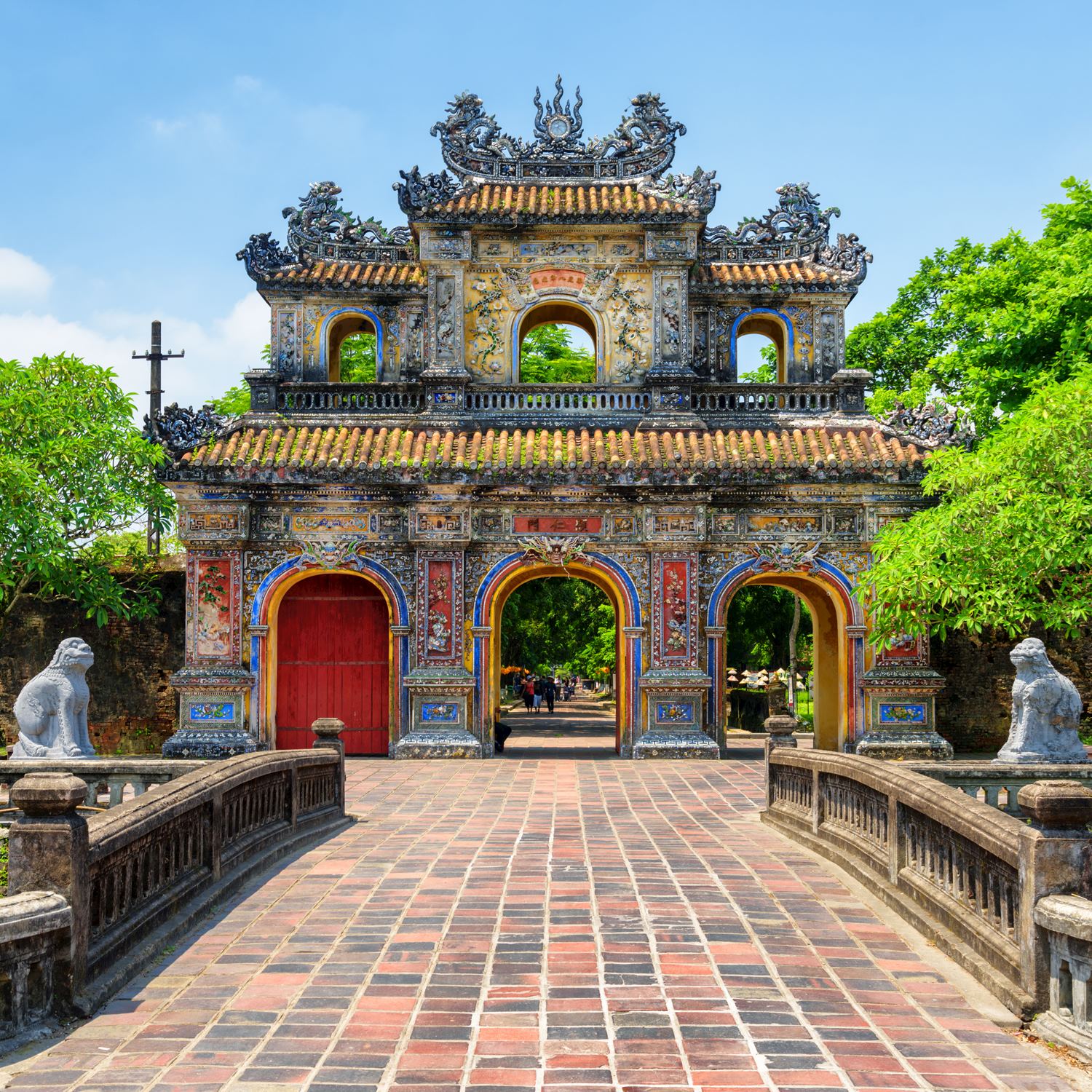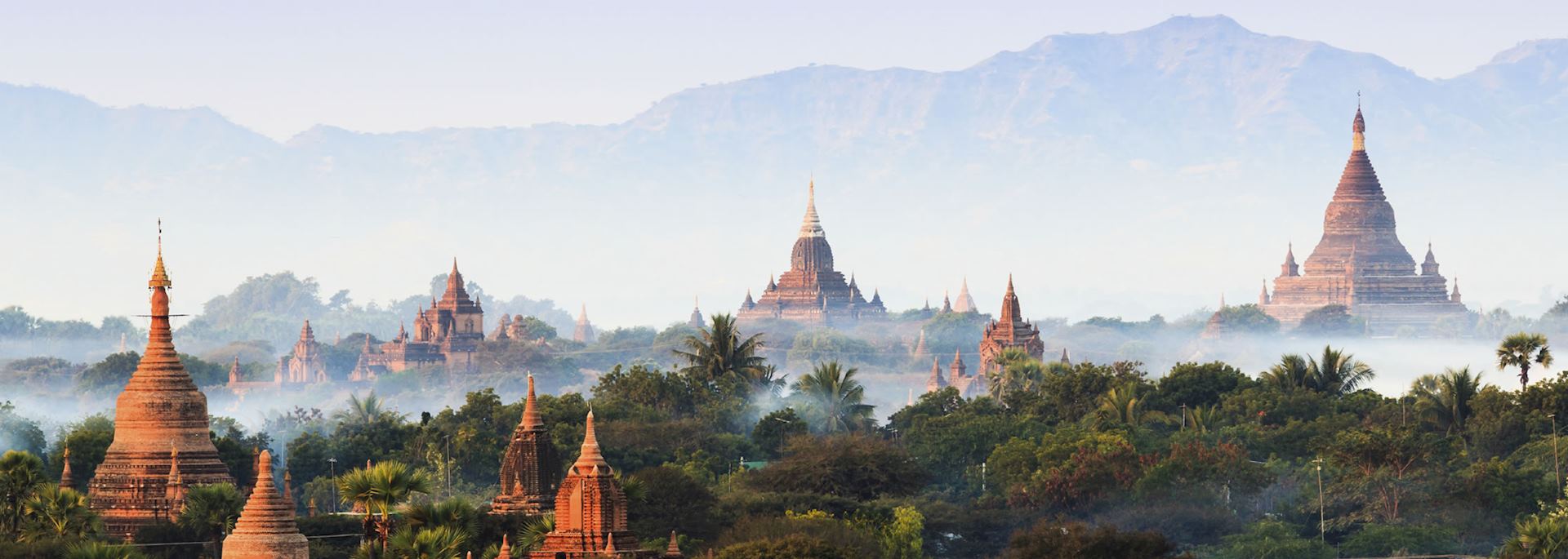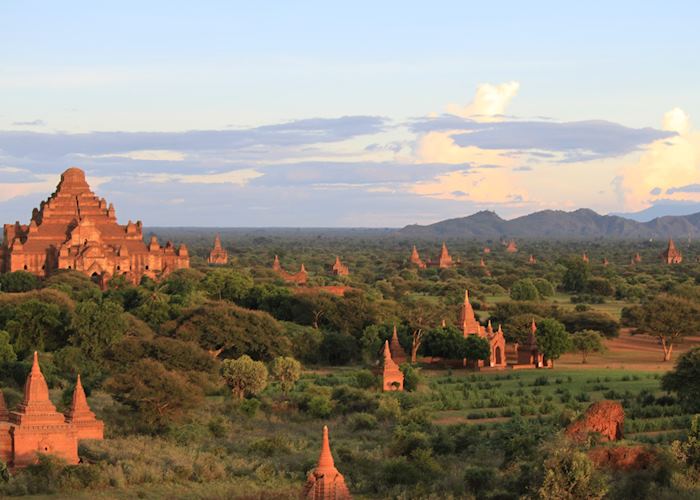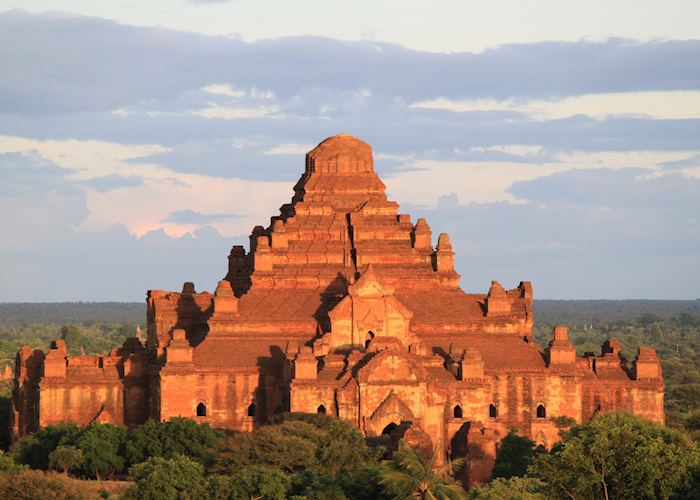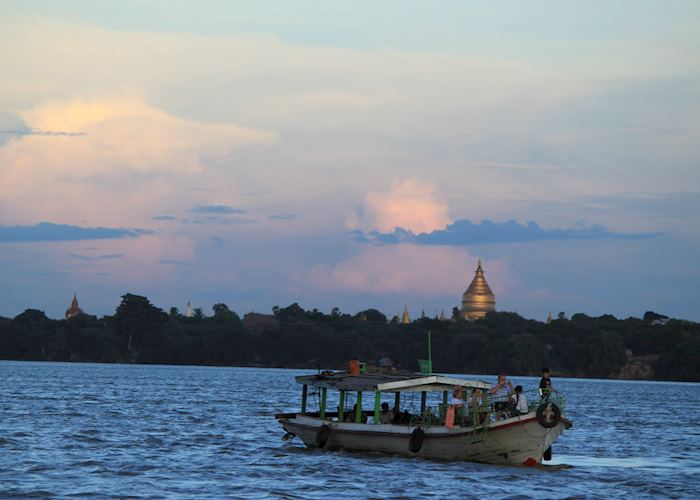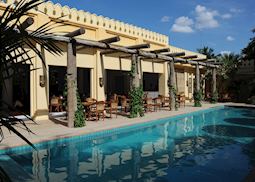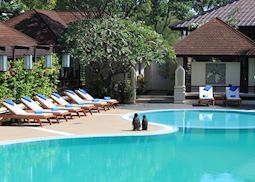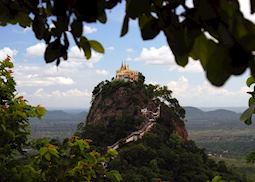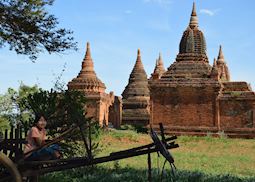Jump to:
Though Bagan had been a major city since King Pyinbya moved the capital here in 874 AD, it was not until the Bamar King Anawrahta converted to Theravada Buddhism in the mid 11th century that the 'golden period' of Pagan commenced.
In 1057 he overwhelmed the Mon capital of Thaton, capturing over 30,000 prisoners, including the Mon royal family. Yet the influence of the Mons was key to the development of Bagan. During Anawrahta's 33-year reign the Mon language became the official Royal language instead of Pali and Sanskrit, and Theravada Buddhism became the state religion. It was in honour of this new-found religious fervour that Anawrahta ordered temples to be erected, the most notable being the Shwezigon Pagoda. It was however under the reign of King Kyanzittha (1084-1113) that temple construction reached new heights, perhaps the most famous being the Ananda with its 170 ft golden hti or stupa.
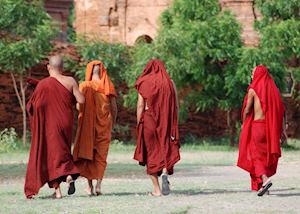 By the start of the 13th century Bagan had become known as the 'city of four million pagodas' and a complex system of irrigation supported extensive rice cultivation on the otherwise arid plain on which Bagan sits. The end of Bagan's dominance was heralded when King Narathihapate assassinated an ambassador of Kublai Khan bringing down on himself and his people the considerable wrath of the Mongol Empire in 1287.
By the start of the 13th century Bagan had become known as the 'city of four million pagodas' and a complex system of irrigation supported extensive rice cultivation on the otherwise arid plain on which Bagan sits. The end of Bagan's dominance was heralded when King Narathihapate assassinated an ambassador of Kublai Khan bringing down on himself and his people the considerable wrath of the Mongol Empire in 1287.
Over the next four of five centuries Bagan was left to the elements and considered by many as a region haunted by nats (spirits). The earthquake in 1975 destroyed almost half of the pagodas — although what remains today may be just a glimpse of Bagan at the height of its powers, it is without a doubt a remarkable footprint of a once glorious period in Myanmar's history.
who's been there
-
01993 838 92501993 838 105
- Make an enquiry
Places near Bagan
- Mount Popa 30 miles away
- Kanpetlet 53 miles away
- Mindat 60 miles away
- Monywa 71 miles away
- Mandalay 98 miles away
- Mrauk U 115 miles away
- Kalaw 116 miles away
- Pindaya 117 miles away
- Nyaung Shwe 138 miles away
- Inle Lake 139 miles away
- Loikaw 183 miles away
- Hsipaw 188 miles away
- Ngapali Beach 190 miles away
- Lashio 223 miles away
- Bhamo 264 miles away
- Golden Rock 295 miles away
- Ngwe Saung 298 miles away
Photos of Bagan
Accommodation choices for Bagan
We've selected a range of accommodation options for when you visit Bagan. Our choices usually come recommended for their character, facilities and service or location. Our specialists always aim to suggest properties that match your preferences.
-
![Swimming pool at Areindmar Hotel, Bagan, Burma (Myanmar)]()
Areindmar Hotel
Bagan -
![The gardens of the Thiripyitsaya Sanctuary Resort, Bagan]()
-
![Pool, Aye Yar River View Resort, Bagan]()
-
![Bagan Lodge, Bagan]()
Bagan Lodge
Bagan -
![Hotel @ Tharabar Gate, Bagan]()
Hotel@Tharabar Gate
Bagan -
![Pool, Blue Bird, Bagan]()
Blue Bird
Bagan
Ideas for experiencing Bagan
Our specialists seek out authentic ways to get to know the places that could feature in your trip. These activities reflect some of the experiences they've most enjoyed while visiting Bagan, and which use the best local guides.
-
Mount Popa villages on foot ![Mystical Mount Popa]()
Mount Popa villages on foot
Mount Popa villages on foot
Driving 80 kilometres southeast of Bagan you reach the famous Mount Popa. Rising 1,518 metres out of the Ayeyarwady flood plain, Mount Popa is one of the most sacred sites in Myanmar and home to the 'Nats'.
View details -
Bagan by bicycle ![Village girl relaxing, Bagan, Burma (Myanmar)]()
Bagan by bicycle
Bagan by bicycle
Prepare to be astounded by Bagan, a grassy plain scattered with pagodas. A full day of cycling will take you to the city's most fascinating sites, including the teeming Nyaung Oo Market, the glittering Shwezigon Pagoda, and the atmospheric cave temple of Wetkyi-In Gubyaukgyi.
View details -
Dawn balloon flight over Bagan ![Dawn balloon flight over Bagan, Burma (Myanmar)]()
Dawn balloon flight over Bagan
Dawn balloon flight over Bagan
An early morning balloon flight over Bagan is a fantastic way to see the temple landscape. Your trip will end with a light snack and celebratory glass of champagne.
View details
